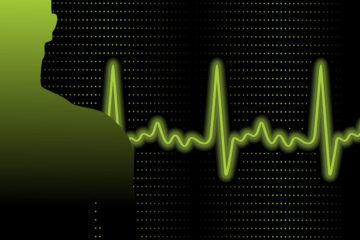Introduction
Over the last ten years, we have witnessed, significant growth in the number of smart devices, wireless products, and embedded sensors connected and integrated with commercial and organizational networks supporting the enhanced provision of real-time services to the B2B and B2C marketplaces. Current industry trends suggest a continual high-velocity growth of new innovative and highly-monetized and digital services and billions of new customers accessing and proactively using the digital ecosystem.
The connections will comprise phones and tablets, home appliances, commercial and manufacturing machinery, and public-sector equipment and services.
![]()
To meet the projected huge influx of new digital services and users, highly-scalable, flexible, interoperable, energy-efficient, and secure network architectures and technical frameworks will need to be improved or newly created by the leading technology and Cloud providers. The key outcome and benefit is the provision of cost-effective services to small and medium businesses (SMB) and local municipalities for set-up and management of personalized digital services, for consumers and citizens, within an Internet of Things (IoT) approach.
Kevin Ashton is an innovator and consumer sensor expert who coined the phrase “the Internet of Things” to describe the network connecting objects in the physical world to the Internet.
The rapid expansion of IoT as a solution is continually creating real business opportunities to link unconnected digital devices and develop new supporting products and services to drive revenue, profitability, productivity improvements at the Intelligent Edge.
IoT: Definition
In recent years, IoT has emerged as a revolutionary paradigm, in which a continuum of devices and objects are interconnected with an array of communication solutions. As the ‘things’ become more intelligent and capable of locomotion IoT will evolve into smart networks of advanced forms of machine intelligence with the ability to possess a degree of autonomy.
The high-value potential of IoT solutions to business and governmental services is not the ability to connect and integrate digital objects or embedded technologies and electronics but rather the capability to leverage insights from data, automate, digitalize, optimize and, transform business processes and business models within a digital transformation approach. IoT is also about the array of processes and technologies (big data, analytics, cloud, edge computing or fog computing, IoT platform software, IoT gateways, etc.) integrated together to provide the required data outputs.
Market research reveals that the IoT will consist of about 30 billion objects by 2020. That’s approximately four devices for every human being on the planet!
Two technical advances are shaping and driving IoT include to success include:
- Mobile technology, including mobile devices and the widespread availability of wireless connectivity.
- Rapidly falling price of sensors. For example, in the early to mid – the 1990s, a solid-state sensor cost $20 to $25 and by the end of the decade, it was at a $5 level.
“The primary goal of IoT is to solve business problems, not to deliver a cool project or new technology. Focus on a business-relevant problem, and work with your customer to solve it.”
Maciej Kranz
IoT: Applications
IoT is paving the way for the development of highly-responsive digital solutions, more innovative and efficient B2B and B2C products and services, and ultimately improving the overall business value proposition and quality of life for all demographic groups. The sectors realizing significant benefits from successful IoT implementation and use include SMART:
- Buildings
- Cities
- Communications
- Energy
- Healthcare
- Homes
- Manufacturing
- Markets
- Products & Services
- Transportation
The B2B applications with significant widespread industry adoption and deployment encompass track & trace, connected cars, fleet management, predictive maintenance, demand response, distributed generation and storage, smart meters, self-optimized production, automated inventory management, and remote patient monitoring.
IoT Solutions: Value
The IoT is emerging as the next technology mega-trend, with significant repercussions across the business spectrum. McKinsey & Company identified six key values that support the successful adoption of IoT:
- Enhanced situational awareness.
- Immediate control and response in complex autonomous systems.
- Optimized resource utilization.
- Business and support process optimization.
- Sensor-driven decision analytics strategic and tactical.
- Tracking human behavior and outcomes.
“IoT is transforming the everyday physical objects that surround us into an ecosystem of information that will enrich our lives. From refrigerators to parking spaces to houses, the IoT is bringing more and more things into the digital fold every day, which will likely make the IoT a multi-trillion dollar industry in the near future.”
PwC
Sensing the Future of the Internet of Things
IoT Solutions: Market Research
Gartner reported the below IoT trends: 2018 Planning Guide for the Internet of Things
- Stakeholders’ and sponsors’ risk concerns span a wide range of topics. The information security of the Internet of Things (IoT) systems tops the list, but concerns about delivery capability, service quality, reliability, and safety must also be addressed.
- IoT design patterns are maturing. 2018 will see clear models for IoT edge computing and hybrid platforms emerge, separating hype from practical application.
- The development of an IoT technical strategy is central to addressing stakeholder and sponsor concerns regarding readiness. Organizations should not delay identifying an IoT architect or developing a target IoT architecture.
“The Internet will disappear. There will be so many IP addresses, so many devices, sensors, things that you are wearing, things that you are interacting with, that you won’t even sense it. It will be part of your presence all the time. Imagine you walk into a room, and the room is dynamic. And with your permission and all of that, you are interacting with the things going on in the room.”
Eric Schmidt
IoT Solutions: Technical Considerations
IoT solution introduction requires a formal risk assessment on the enterprise technology fit, potential technical conflicts, and user requirements to ensure that the project will be successfully deployed. Analysis points include:
- Compatibility and Longevity
- Connectivity
- Enterprise IT Architecture
- Intelligent Analysis & Actions
- Network Technical Architecture
- Privacy
- Security
- Standards
IoT Solutions: Examples
An example of a practical IoT use that is much in the news is the development of autonomous (“driverless”) motor vehicles. The World Health Organization (WHO) has put the annual number of auto-related deaths worldwide at well over one million. Most of these deaths result from human error. IoT technology, particularly the increased use of safety-focused sensors in automobiles, has the potential to dramatically reduce motor-vehicle associated accidents and fatalities when embedded in autonomous cars and other types of vehicles.
A second example is in the manufacturing sector where IoT is improving the safety of employees with wearable technology equipped with embedded sensors. This application mitigates unsafe conditions in the workplace. For example – detecting toxic gasses or over-exertion, etc.. IoT devices placed purposely throughout even the most complex supply chain locations provides real-time insight into workplace problems before they are physically identified or activated.
“Despite wide concern about cyber attacks, outages and privacy violations, most experts believe the Internet of Things will continue to expand successfully the next few years, tying machines to machines and linking people to valuable resources, services and opportunities.”
Pew Research Center
The Way Forward
Superior performance in the digital age requires adaptable technology infrastructure that can successfully manage the complexities of IoT frameworks, multi-cloud environments, embedded security and compliance policies, and deep business alignment. Best-in-class businesses and governmental agencies are successfully redesigning their information technology activities focusing on the six core guidelines below:
- Breakdown boundaries across IT stack.
- Embrace user-friendly solutions and tools.
- Glean insights from data.
- Include policy engines.
- Support open source.
- Utilize DevOps.
The immediate future work environment will be made up of both humans and intelligent things. Success will depend largely on the organization’s understanding and leveraging the strengths and weaknesses of human cognition and machine intelligence to command and control new infrastructure, process and governance forms.
“As the Internet of Things advances, the very notion of clear dividing line between reality and virtual reality becomes blurred, sometimes in creative ways.”
Goldman Sachs
The Internet of Things The Next Mega-Trend


